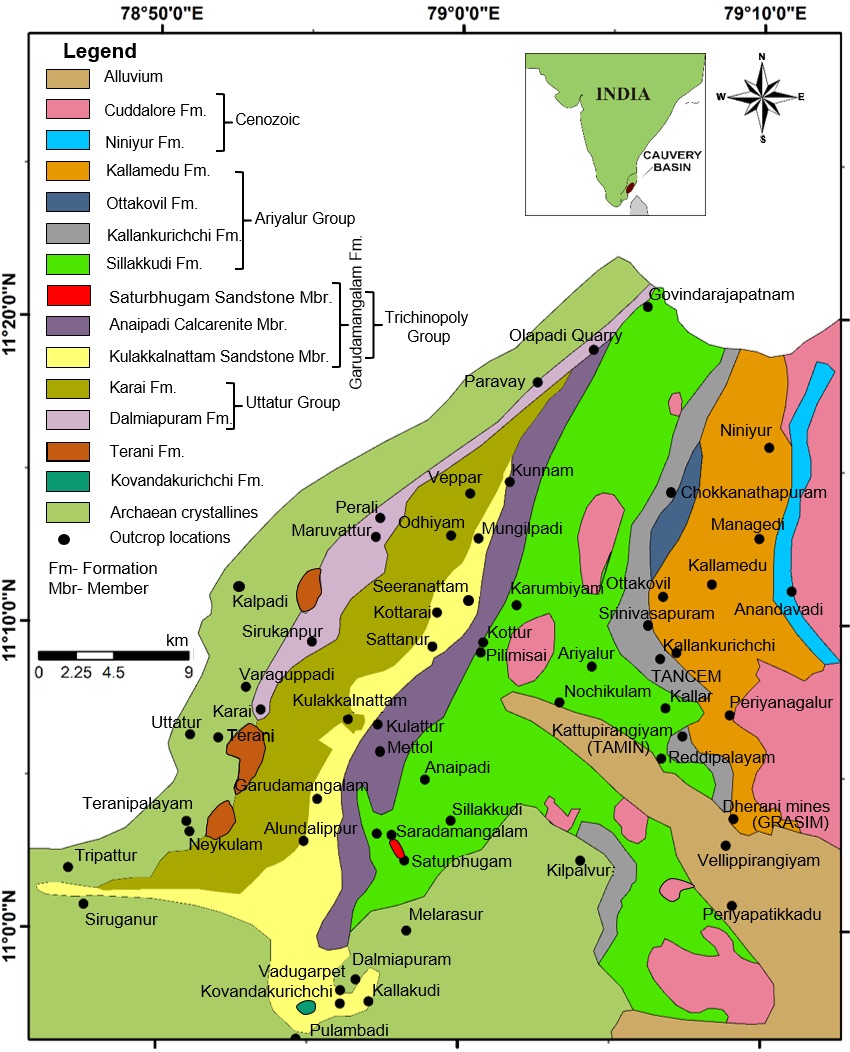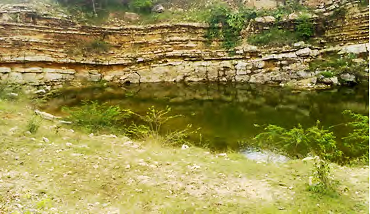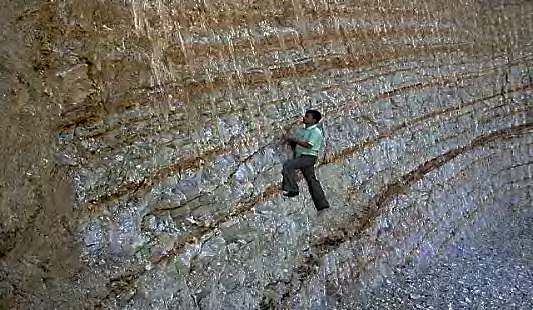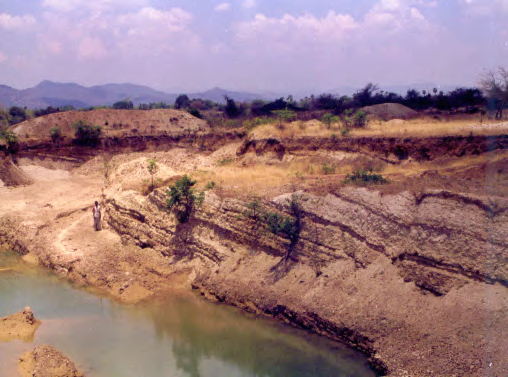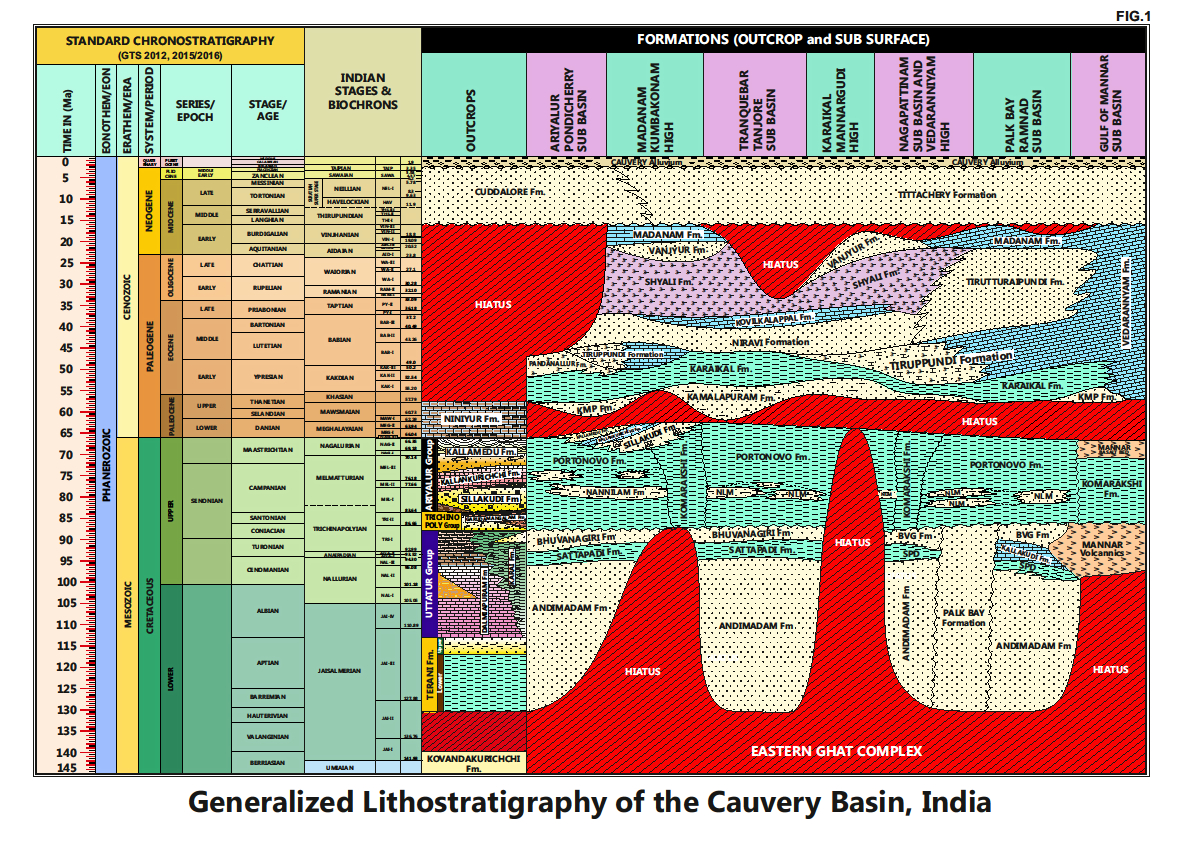Terani Fm
Type Locality and Naming
ARIYALUR-TRICHIRAPPALLI OUTCROP: Named after Terani village, West of Ariyalur; and well exposed in the Terani Clay Mine located near Karai Village (Ramasamy and Banerji 1991). Type section is represented in quarries located 0.7 km east of Maruvattur village and 0.6 km east of Karai village. Good exposure at Dalmia Ceramic (Bharat) Ltd. Kaolinite quarry, 2 km NE of Terani village.
[Figure 1: Geologic map of Ariyalur area]
Synonym:
Earlier, the Terani Formation was referred to as equivalent to Sivaganga Fm. However, the Sivaganga Formation is more a supposition with a type locality as a crystalline area, where no sedimentary rocks present. Subsequent researchers studied that the distinct and type mappable section is represented in Terani-Kalpadi traverses, which distinctly explains these non-marine Cretaceous events and also equated to synrift event during the Gondwana drifting event. Hence it is appropriate to place a Terani Formation in the stratigraphic column by replacing Sivaganga Formation (Nagendra et al., 2018).
Lithology and Thickness
Sandstone to claystone. Basal unit of coarse- to very coarse-grained, bedded sandstone, with local boulder conglomerates. Followed by kaolinitic claystone and shale with interbeds of siltstone. Sandstones are well lithified with calcareous cement. Thickness ranges up to 60 m (Sundaram et.al 2001). The clay and calcareous sandstones are quarried in irregular pits. The Terani clay possesses the plant fossils.
Terani Formation consists of two members: the lower Terani Claystone Member with sandstone intercalations, and the upper Terani Gritty Ferruginous Sandstone Member. These sediments consist of quartzose and feldspathic, gritty and ferruginous sandstones with intercalated claystones. The sandstone contains pebbles and boulders of igneous (gneiss) rock.
[Figure 2: Field photos: Terani Formation. Kalpadi Sandstone, Terani clay mine exposure of alternating layers of sandstone and shale, and Terani Clay mine (provided by A. Nallapa Reddy and R. Nagendra]
[Figure 3: Generalized Stratigraphy of Cauvery Basin (Provided by A. Nallapa Reddy & R. Nagendra)]
Relationships and Distribution
Lower contact
Basal non-conformity against basement, or unconformably on Kovandankurichchi Fm conglomerates. This lower contact with the Berriasian (?) Kovandankurichchi Fm forms sequence boundary-2 (SB2).
Upper contact
Terani Formation unconformably underlies the Dalmiapuram Fm; or it is Gradational to, and interfingers with, marine carbonate strata of Dalmiapuram Fmg
Regional extent
Sporadically -- three outcrops are exposed at Teranipalyam, Terani, Kalpadi villages.
GeoJSON
Fossils
Plant fossils are Ptilophyllum, Electocladus. The Terani Claystone Member contains rare and poorly preserved plant fossils of Ptilophyllum acutifolium, whereas the shale and clay layers of the Terani Gritty Ferruginous Sandstone Member contain arenaceous foraminifera that indicate an Early Cretaceous (Barremian–Aptian) age (Banerji 1982; Sastry et al. 1963).
Age
Depositional setting
Fluvial to Paralic. These are considered as overbank fluvial and lacustrine deposits (Sundaram et al., 2001)
Additional Information
The Ptilophyllum acutifolium-bearing Terani Claystone Member with sandstone intercalations, is conformably overlain by the Terani Gritty Ferruginous Sandstone Member containing planktonic foraminifera represented by Hedbergella trocoidea, H. planispira and H.delrioensis, and ammonite shells. This surface likely represents sequence boundary-3 (SB3), which separates marine from non-marine facies. SB3 merges with the transgressive surface (TS), which marks the first marine transgression at the basin margin. This surface closely coincides with the Aptian/Albian boundary (Reddy et al. 2013).
